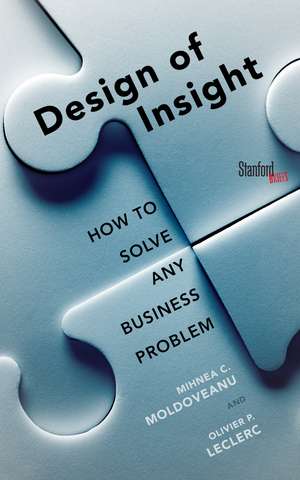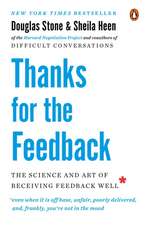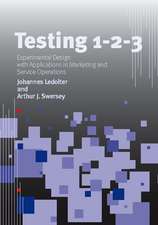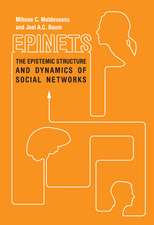The Design of Insight: How to Solve Any Business Problem
Autor Mihnea Moldoveanu, Olivier Leclercen Limba Engleză Paperback – 5 mai 2015
Preț: 104.88 lei
Nou
20.07€ • 20.93$ • 16.68£
Carte tipărită la comandă
Livrare economică 21 martie-04 aprilie
Specificații
ISBN-10: 080479409X
Pagini: 160
Dimensiuni: 127 x 203 x 13 mm
Greutate: 0.16 kg
Editura: Stanford University Press
Colecția Stanford Briefs
Recenzii
Notă biografică
Cuprins
Business problem solving is hard not only because problems feature a lot of uncertain, volatile elements, but also because they are loosely defined or undefined. We introduce the basic craft of problem shaping and definition, and show how models and modeling languages help us turn ill-defined, ill-structured problems into well-defined problem statements we can solve. We also show how using several different problem solving languages to define the same problem can increase the span of possible solutions and the probability of finding and unexpectedly optimal ('innovative') solution, once it is defined. We introduce five problem solving languages ¿ which we call Flexons - drawn from the natural and social sciences that provide lenses for representing and defining problems, and which are powerful enough to help us frame problems at any level at which we may choose to intervene: individuals, dyads, groups, teams, organizations, markets and institutions.
We introduce and elaborate the Networks Flexon ¿ a problem solving language that uses graphs to represent entities as varied as social interactions in an executive team, deal flows in an investment syndicate, modules in a software platform or value-linked activity chains in an industry. We show how problems at multiple levels of analysis can be defined, shaped, structured and simplified using this language, which supplies not only a basic representation scheme ¿ nodes and links ¿ but also a set of performance measures at the level of the network as a whole (density, connectivity, clustering, path length) and at the level of individual nodes (centrality measures). The Networks Flexon has been used in fields as varied as statistical mechanics, industrial organization economics, sociology, psychology, neuroscience and information theory to solve problems across many different disciplines.
We introduce and elaborate the Decision Agent Flexon ¿ a problem solving language that uses agents, decisions, outcomes and payoffs or incentives to define and structure business problems at any level of analysis. The Flexon also uses concepts such as decision rights, and information and expertise to model the complex landscape of relationships in a hierarchical or non-market organization ¿ and offers a set of performance metrics ¿ such as agency costs, communication costs and coordination costs ¿ that problem solvers using the flexon can use to define their objective functions. This flexon ¿ used broadly across the fields of economics - decision sciences, game theory, agency theory ¿ can be flexibly deployed to define business problems at any level of analysis.
We introduce and elaborate the System Dynamics Flexon ¿ a problem solving language that uses causal maps and stocks and flows of money, matter and information to define and structure business problems at any level of analysis. The Flexon also supplies a set of performance metrics for business problem solving, such as desired transient and steady state responses of a dynamically evolving system ¿ to supply objectives to the problem solver. This modeling language has been broadly used and developwed to datre in fields as diverse as classical mechanics, mechanical, chemical and electrical engineering, psychology, neuroscience and macroeconomic modeling to supply tight and precise problem formulation at any level of analysis.
We introduce and elaborate the Evolutionary Flexon ¿ a problem solving language that uses the basic concepts of populations and variation, selection and retention mechanisms to supply models of the evolution of entities ranging from deliberations within a group, to the evolution of organizations, product modules, technologies, and markets. The Flexon also supplies a set of outcome measures ¿ like fitness maximization and the speed and accuracy of convergence in variation-selection-retention processes to allow problem solvers to define and sharpen their problem solving objectives. The Evolutionary Flexon has been used in fields as diverse as theoretical and experimental biology, biological archaeology and anthropology, industrial organization economics, sociology, psychology, theoretical computer science and the theory of algorithms to both explain and predict a large number of phenomena in multiple domains of experience.
We introduce and elaborate the Information Processing Flexon ¿ a problem solving language that uses the basic concepts of problems, solutions, solution search spaces, problem solving agents and the complexity of various problem statements to represent business processes at any level. It also supplies a set of performance measures like accuracy, reliability and speed of convergence that will help problem solvers define objective functions for the problems they are solving. The Information Processing Flexon has been used in fields as diverse as information theory, theoretical computer science, the theory of algorithms, organizational theory and statistical mechanics to address a large number of diverse problems.
This chapter shows how the five Flexons can be used, serially and in parallel, to define, structure and solve loosely articulated business difficulties, predicaments and situations. Through examples, it highlights the value of the flexons in both supplying the requisite depth and precision required for solving real business problems in practical amounts of time, and the value of diversity and heterogeneity of models and modeling languages in solving any business problem.


















